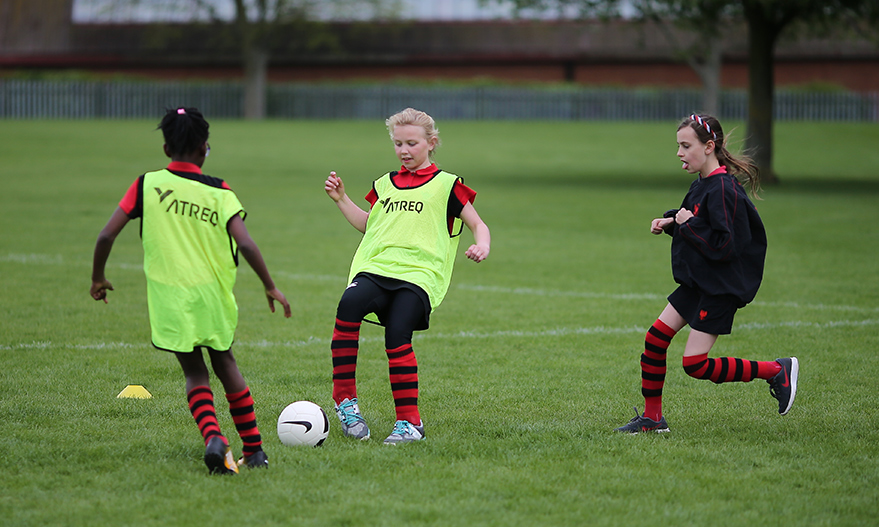
How to connect and combine creatively with others
- The Boot Room
- 03 September 2020
Want to help your players connect and combine with each other? Firstly, remember that possession in the Foundation Phase starts with focusing on individual possession, such as running, dribbling, twisting and turning with the ball.
Once this has been mastered, more emphasis can then be put on combination play.
The ability to connect and combine effectively with others needs to be introduced slowly, as players begin to develop an understanding of space and positioning. As they get older, this will transform the way they are able to play and their abilities to pass the ball will start to look more like what we see in an adult game of football.
One key DNA message is to (whenever possible) include an element of decision-making which relates to the game, as players practise their individual capability on the ball. This is perfect preparation for combining with teammates, as they begin to make the distinction between how they might be successful using their own individual skill, and how success might also be possible by unselfishly combining with teammates.
Players will develop this level of decision-making at different times. Some will look to combine and share from an early age; for others it will appear later. However, if we provide players with a great technical foundation, then lots more of their mental capacity can be freed up to make those important decisions in the game.
Combining with others is not about always passing the ball early, sideways or back. It’s having the ability to eliminate opponents with disguise, surprise and the unorthodox movement, decision or pass. It comes from players being put into small-sided situations time after time, so that they’re able to refine their decision-making and develop the capacity to combine in a number of different ways, using a range of techniques.
If we expose players to this and encourage them to stay on the ball and be creative, we have a really good chance to help them combine with their teammates in some clever and exciting ways.

Celebrate the development process rather than criticise or move children on inappropriately. Give them the support, encouragement and practice that they need
Most 5-8 year olds won’t be anywhere near this yet and will still be developing their own individual mastery of the ball, their body and ultimately, their decisions.
For our 9-11 year olds, the ability and willingness to combine effectively with teammates will become more important, but this doesn’t mean we forget about the impact an individual can have on the game.
Individual brilliance must be encouraged – even as the team takes on greater importance. We want to produce players who have the individual capacity to change a game.
Here are some things we can support the players with, while remembering that individual mastery of the ball will still be a work in progress:
- Help players understand the value and power of combining with teammates.
- Put the players in tight situations to ‘force’ clever combinations.
- Help players with supporting positions and body shape.
- Encourage the use of different parts of the foot.
- Recognise and celebrate attempts to combine with teammates.
- Ensure lots of practice to refine decision-making.
To learn more about Foundation Phase DNA, click here.


